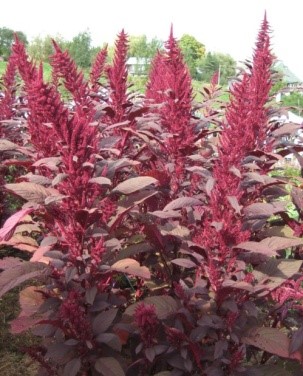A miracle pseudocereal crop — Grain Amaranthus
P.S. Devanand*, B. Sivakumar, K. Sivakumar, N. Raja, K. Hemaprabha, K. B. Sujatha, K. Nelson Navamani Raj, R. Vijayan, S. Utharasu, K. Kumar, R. Revathi
June 25th 2025, 5:05:10 am | 5 min read

Origin and types
Amaranth has been grown in Latin America for thousands of years and is thought to have been domesticated at least as early as 4000 BC. In pre-Columbian times in the New World it was almost as important as maize and beans, and it is thought to have provided 80% of the caloric consumption of the Aztecs. Around 20,000 tonnes were sent annually as a tribute to the Aztec ruler (Raven et al., 1992). Grain amaranths are pseudocereal species originating in the tropics and subtropics of the Americas but increasing in popularity globally for diet diversification around the world. They also play an important role in future food security being highly nutritious compared to cereals and one of the few dicotyledonous crops with C4 photosynthesis and high heat and drought tolerance. These sources of protein and starch are balanced as an almost perfect food. As stress-resistant plants, they are on the “front-line” of agricultures' adaption to climate change. Seventy species of grain amaranth are recognized and some are difficult to distinguish. Many grow as weeds. Two species, Amaranthus hypochondriacus, and Amaranthus cruentus, are native to Mexico and Guatemala, and Amaranthus caudatus is native to the Andes of Peru. The photosynthetic pathway of amaranth is C4 and the chromosome complement is 2n = 32 (A. caudatus and A. hypochondriacus) or 2n = 34 (A. cruentus). A. hypochondriacus plants grow up to 3 m high and those of the other two species reach heights of 2 m. Seed heads can weigh up to a kilogram and may contain half a million fruits. Fruits are only 0.9–1.7 mm in diameter and can vary from cream to gold or pink to black.
Grain Characteristics
Amaranth grain is nearly spherical, approximately 1 mm in diameter, and varies in color from creamish yellow to reddish. It also has a unique composition of protein, carbohydrates, and lipids. Amaranthus hypochondriacus produces creamish yellow grains, Amaranth grain structure differs significantly from that of cereals such as maize and wheat. Amaranth seeds have a circular-shaped embryo or germ, which surrounds the starch-rich perisperm and, together with the seed coat, represents the bran fraction, which is relatively rich in fat and protein. Bran fraction is proportionally higher in amaranth seeds than in common cereals, such as maize and wheat, which explains the higher levels of protein and fat present in these seeds
Usage
Amaranth grain has been consumed since ancient civilizations, for its beneficial properties for human nutrition and health. Most grain amaranth is consumed in Latin America today as a popped cereal mixed with molasses, but it can be milled into a flour for inclusion in bread and other baked products. The crude protein content ranges from 11.8 to 17.6%. Dietary fiber data for grain amaranth are lacking. Values for A. caudatus have been reported to vary from 7.6 to 16.4%.It reportedly contains twice the level of calcium in milk, five times the level of iron in wheat, higher potassium, phosphorus and vitamins A, E, C and folic acid than cereal grains. Especially, in respect of its very high content of vitamins and minerals. The unique combination of Mg, Ca, Fe, and folate in high levels can be used to supplement food products for celiacs, children, or pregnant women, in order to compensate nutritional deficiencies resulting from special diets or high requirements. Also, the balanced composition of essential amino acids contributes to its good nutritional quality.
It has no functional gluten protein and consequently amaranth flour cannot be used on its own to produce leavened bread. Nowadays, our knowledge on this crop has improved. The seed is loaded with a high amount of excellent-quality proteins; its importance is mainly based on the balance of essential amino acids and other key compounds. Globulin and glutelins are the main protein fractions, followed by albumin and prolamins. These proteins have important bioactive peptides which may act as modulators of metabolism and possess other outstanding biological activities, such as antihypertensive and antioxidant properties. Starch is the most abundant chemical component in amaranth grain; the content varies from 48 to 69%. The starch is present mainly as highly branched amylopectin, but some varieties of amaranth grain contain 4.8–7.22% of amylose, a linear starch. Other carbohydrates include sucrose, raffinose, stachyose, and maltose in small but variable amounts. Microgranule starches, like those in amaranth, are being studied for paper coatings, fat substitutes, and biodegradable applications.
Grain Amaranthus

Seed
